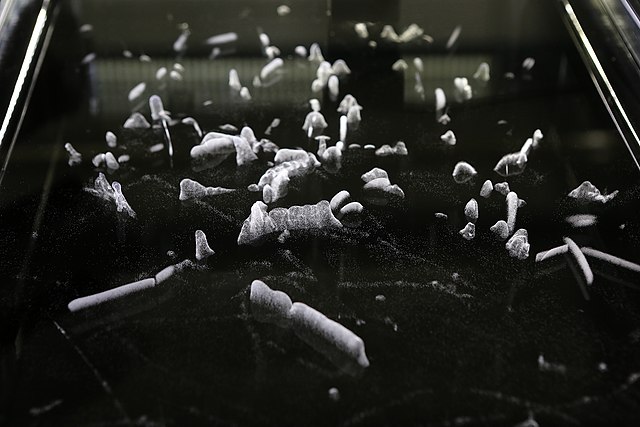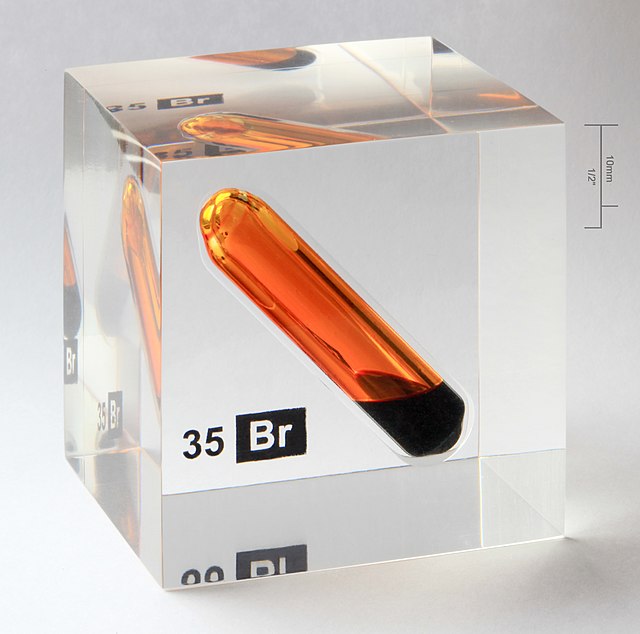Condensation is the change of the state of matter from the gas phase into the liquid phase, and is the reverse of vaporization. The word most often refers to the water cycle. It can also be defined as the change in the state of water vapor to liquid water when in contact with a liquid or solid surface or cloud condensation nuclei within the atmosphere. When the transition happens from the gaseous phase into the solid phase directly, the change is called deposition.
Condensation forming in the low pressure zone above the wing of an aircraft due to adiabatic expansion
In cloud chambers a liquid (sometimes water, but usually isopropanol) condenses upon contact with a particle of radiation thus producing an effect similar to contrails
Condensation on a window during a rain shower.
In physics, a state of matter is one of the distinct forms in which matter can exist. Four states of matter are observable in everyday life: solid, liquid, gas, and plasma. Many intermediate states are known to exist, such as liquid crystal, and some states only exist under extreme conditions, such as Bose–Einstein condensates and Fermionic condensates, neutron-degenerate matter, and quark–gluon plasma. For a list of exotic states of matter, see the article List of states of matter.
Bromine in both liquid and gas state, encased inside acrylic in solid state
Helium's orange glow in its plasma state
Artificial plasma produced in air by a Jacob's Ladder. The extremely strong potential difference between the two rods ionize particles in the air, creating a plasma.
SBS block copolymer in TEM







